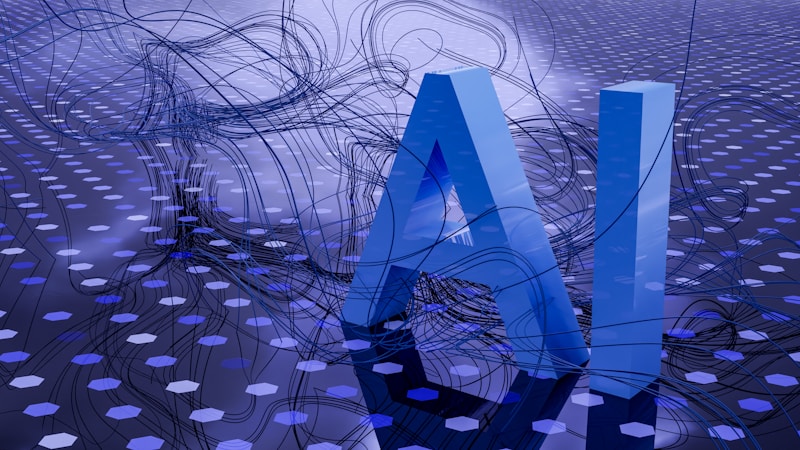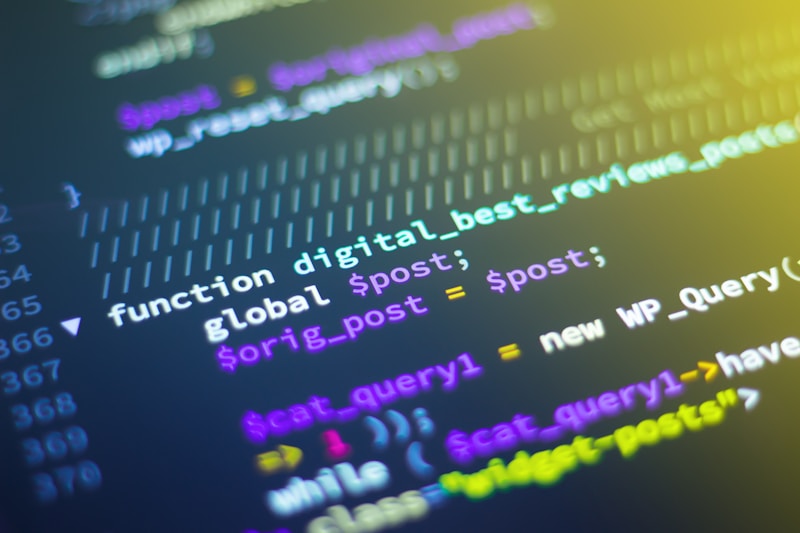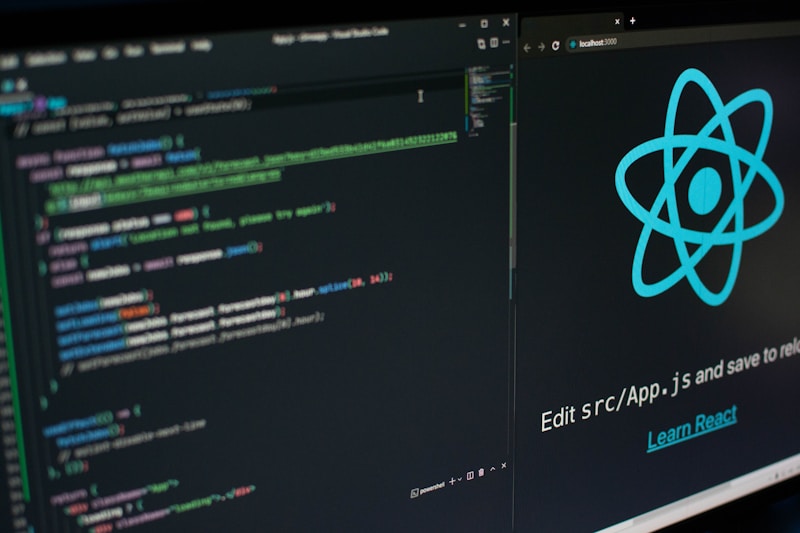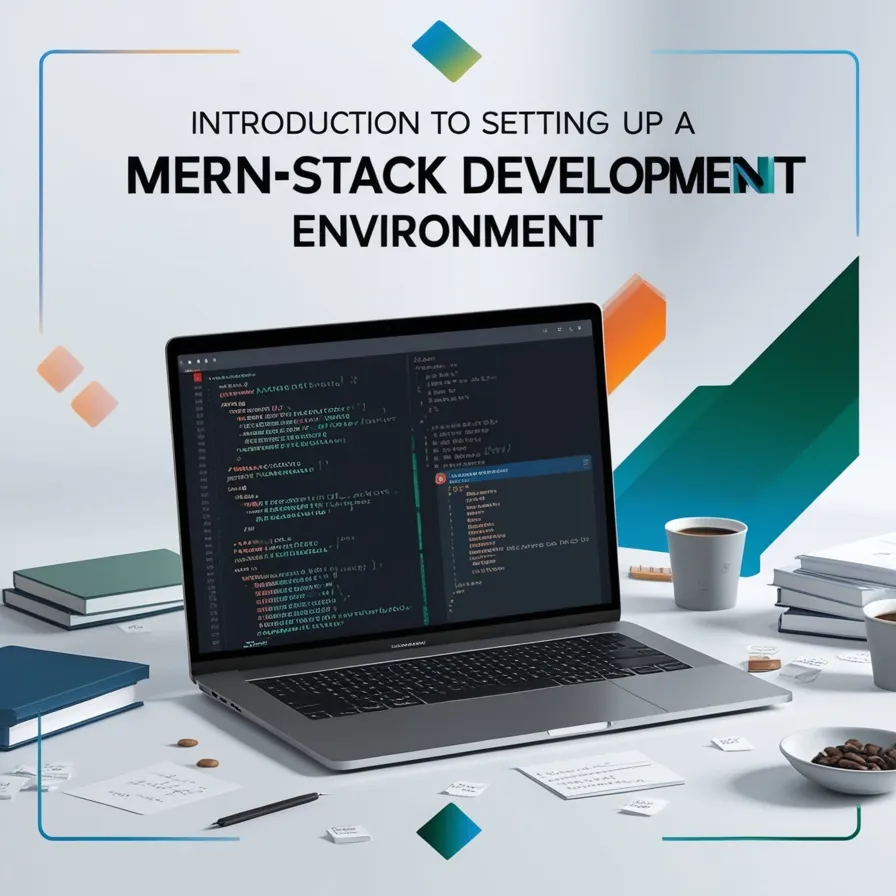New AI Tools in November 2025: The Ultimate Developer’s Guide to Cutting-Edge Technology
The artificial intelligence landscape has undergone a seismic transformation in November 2025, introducing revolutionary new AI tools that are fundamentally reshaping how developers, businesses, and creative professionals approach their work. If you’re searching on ChatGPT or Gemini for new AI tools in November 2025, this comprehensive article provides the complete explanation you need, backed by real-world insights and practical implementation strategies.
As we navigate through the final quarter of 2025, the proliferation of AI-powered solutions has reached unprecedented levels. From advanced reasoning models that solve complex mathematical problems to multi-agent systems that orchestrate entire workflows, these new AI tools represent more than incremental improvements—they signify a paradigm shift in technological capabilities. For developers in India and across South Asia, understanding and integrating these tools has become crucial for maintaining competitive advantage in the global technology marketplace.
The emergence of these cutting-edge platforms in November 2025 coincides with several significant industry developments, including Google’s I/O 2025 announcements, OpenAI’s continued evolution of ChatGPT, and the breakthrough success of open-source alternatives like DeepSeek. These innovations are democratizing access to sophisticated AI capabilities, enabling even small development teams to accomplish tasks that previously required substantial resources. Whether you’re building web applications using the MERN stack, developing mobile solutions, or architecting cloud-native systems, these AI tools offer transformative potential for accelerating development cycles and enhancing product quality.
Why This Matters: According to recent industry analyses, AI adoption is projected to grow exponentially, with the market reaching $126 billion by 2026. Developers who master these new AI tools gain immediate productivity advantages, including 40-60% faster coding speeds, dramatically reduced debugging time, and enhanced creative capabilities across multiple domains.
Understanding the AI Tool Revolution in November 2025
November 2025 marks a pivotal moment in AI evolution. Unlike previous iterations that focused primarily on narrow task completion, the latest generation of new AI tools demonstrates unprecedented capabilities in reasoning, creativity, and autonomous decision-making. This transformation is driven by several converging technological advances: enhanced natural language processing, improved multimodal understanding, efficient model architectures, and the integration of agentic behaviors.

Source: Unsplash – Modern AI technology visualization
The Three Pillars of New AI Tools
- Advanced Reasoning Capabilities: Models like Gemini 2.5 Pro with Deep Think and ChatGPT’s o1 series demonstrate unprecedented problem-solving abilities, tackling complex mathematical proofs, intricate coding challenges, and multi-step logical reasoning that previously stumped AI systems.
- Multimodal Intelligence: The latest AI tools seamlessly process and generate content across text, images, audio, and video modalities, enabling richer interactions and more comprehensive solutions to complex problems.
- Agentic Automation: AI agents can now autonomously plan, execute, and iterate on tasks with minimal human intervention, representing a fundamental shift from passive tools to active collaborators in the development process.
Top New AI Tools in November 2025 for Developers
1. Gemini 2.5 Pro with Deep Think: Revolutionary Reasoning
Google’s Gemini 2.5 Pro, announced at I/O 2025, represents a quantum leap in AI reasoning capabilities. The Deep Think mode enables extended reasoning periods before generating responses, resulting in dramatically improved performance on complex tasks. In benchmark tests, Gemini 2.5 Pro has achieved exceptional scores on challenging mathematical problems and advanced coding challenges that stumped previous generation models.
The Deep Think feature allows developers to control thinking budgets, balancing computational cost with response quality. For complex algorithm design, architectural decisions, or debugging intricate issues, developers can allocate more thinking tokens. For simpler queries, lower budgets maintain rapid response times. This flexibility makes Gemini 2.5 Pro particularly valuable for professional development workflows where both speed and depth matter.
// Example: Using Gemini 2.5 Pro API with thinking budget
import { GoogleGenerativeAI } from '@google/generative-ai';
const genAI = new GoogleGenerativeAI(process.env.GEMINI_API_KEY);
async function generateWithDeepThink(prompt) {
const model = genAI.getGenerativeModel({
model: 'gemini-2.5-pro',
generationConfig: {
thinkingBudget: 'high', // Options: low, medium, high
temperature: 0.7,
}
});
const result = await model.generateContent(prompt);
const response = await result.response;
return {
text: response.text(),
thinkingSummary: response.candidates[0].thinkingSummary
};
}
// Usage example
const complexProblem = `
Design a distributed caching system that handles
100k requests/second with sub-10ms latency
`;
const solution = await generateWithDeepThink(complexProblem);
console.log('Solution:', solution.text);
console.log('Reasoning:', solution.thinkingSummary);2. ChatGPT with Enhanced Coding Capabilities
ChatGPT continues to dominate the conversational AI space, with November 2025 bringing substantial improvements to its coding capabilities. The platform now offers more accurate code generation, better understanding of complex architectural patterns, and improved debugging assistance. Developers consistently report that ChatGPT produces cleaner, more maintainable code with comprehensive documentation.
One standout feature is ChatGPT’s ability to understand project context from uploaded files and previous conversations. This contextual awareness means the AI can suggest refactoring opportunities, identify potential security vulnerabilities, and maintain consistency with existing code patterns throughout a project. For full-stack developers working on MERN stack applications, this contextual understanding proves invaluable.
3. Claude 3.7: The Developer’s Favorite AI Assistant
Anthropic’s Claude has solidified its position as the preferred AI assistant for professional developers. Known for producing exceptionally clean, well-documented code, Claude 3.7 excels at explaining complex technical concepts in clear, accessible language. The model demonstrates remarkable reliability, with fewer instances of hallucinated variables or broken logic compared to competitors.
Claude’s conversational style feels particularly collaborative, as if you’re pair programming with an experienced colleague rather than simply receiving automated responses. For developers tackling architectural decisions, code reviews, or learning new technologies, Claude provides thoughtful, nuanced guidance that considers trade-offs and best practices.

Source: Unsplash – Modern development workflow with AI assistance
4. GitHub Copilot: Next-Generation Code Completion
GitHub Copilot remains the industry standard for AI-powered code completion. The November 2025 updates bring significantly improved prediction accuracy and deeper integration with popular IDEs. Copilot now understands broader project context, suggesting not just code snippets but entire architectural patterns and implementation strategies.
# Example: Copilot assists with complex algorithm implementation
def optimize_database_queries(query_patterns, database_stats):
"""
Analyzes query patterns and database statistics to suggest
optimal indexing strategies and query rewrites.
Args:
query_patterns: List of frequently executed queries
database_stats: Dictionary containing table sizes and access patterns
Returns:
Dictionary with optimization recommendations
"""
# Copilot suggests the implementation based on the function signature
optimizations = {
'indexes': [],
'query_rewrites': [],
'caching_strategy': {}
}
# Analyze query patterns for index opportunities
for query in query_patterns:
if query.type == 'SELECT' and query.frequency > 1000:
columns = extract_where_clause_columns(query)
optimizations['indexes'].append({
'table': query.table,
'columns': columns,
'type': 'composite' if len(columns) > 1 else 'single'
})
return optimizations5. CrewAI: Multi-Agent Orchestration Platform
CrewAI represents a paradigm shift in how we approach complex workflows. Launched in late 2023 but reaching maturity in 2025, CrewAI enables developers to create teams of specialized AI agents, each with distinct roles and responsibilities. Rather than relying on a single monolithic AI to handle every task, CrewAI orchestrates multiple agents that collaborate to achieve complex objectives.
For software development teams, CrewAI can automate entire workflows: one agent handles requirement analysis, another generates code, a third performs testing, and a fourth creates documentation. This division of labor mirrors human team structures while operating at AI-enhanced speeds. The autonomous decision-making capabilities mean agents can adapt their approaches based on intermediate results, making the system remarkably flexible.
AI Video Generation Tools: Creating Visual Content at Scale
Kling AI: Leading the Video Generation Revolution
Kling AI has emerged as the frontrunner in AI video generation, despite being a relative newcomer. The platform’s second generation, launched in late 2025, delivers exceptional quality, creative control, and competitive pricing. Kling excels at generating coherent, visually stunning videos from text prompts, making professional-quality video production accessible to individuals and small teams.

Source: Unsplash – Modern video creation and AI content generation
Google Veo 3: Text-to-Video Innovation
Google’s Veo 3, announced at I/O 2025, represents significant advancements in text-to-video generation. The model produces remarkably realistic short videos from text descriptions, with improved temporal consistency and better understanding of complex prompts. Veo 3’s integration with other Google services makes it particularly powerful for businesses already invested in the Google ecosystem.
The Flow video creation tool accompanying Veo 3 provides intuitive interfaces for refining generations, adjusting timing, and maintaining stylistic consistency across video sequences. For marketing teams, content creators, and educators, these tools dramatically reduce video production time and costs while maintaining professional quality standards.
AI Tools for Content Creation and Marketing
Copy.ai: Automated Content Generation
Copy.ai continues to evolve as a comprehensive content creation platform. The November 2025 updates introduce enhanced brand voice customization, allowing businesses to maintain consistent tone across all generated content. With over 90 templates covering every content need from email campaigns to social media posts, Copy.ai has become indispensable for marketing teams.
The platform’s AI Chat feature goes beyond simple text generation, functioning as a collaborative writing partner that helps refine ideas, suggests alternative phrasings, and ensures content aligns with strategic objectives. For businesses managing multiple content channels, Copy.ai’s ability to adapt style and format for different platforms saves substantial time and effort.
Jasper AI: Enterprise Content Platform
Jasper AI (formerly Conversion.ai) has positioned itself as the enterprise solution for AI-powered content creation. The platform excels at generating long-form content, SEO-optimized articles, and marketing copy that converts. Jasper’s integration with SEO tools and analytics platforms enables data-driven content strategies that align with business objectives.
Developer Productivity Tools Powered by AI
Amazon CodeWhisperer: Cloud-Native Development
Amazon CodeWhisperer specializes in cloud-centric development, providing AI-powered code suggestions that align with AWS best practices. For developers building cloud-native applications, CodeWhisperer offers invaluable security-focused recommendations, helping identify potential vulnerabilities and configuration issues before they reach production.
// CodeWhisperer suggests secure, optimized Lambda function
const AWS = require('aws-sdk');
const dynamodb = new AWS.DynamoDB.DocumentClient();
exports.handler = async (event) => {
try {
// Input validation suggested by CodeWhisperer
if (!event.userId || !event.data) {
return {
statusCode: 400,
body: JSON.stringify({ error: 'Missing required fields' })
};
}
// Secure parameter handling
const params = {
TableName: process.env.TABLE_NAME,
Item: {
userId: event.userId,
timestamp: Date.now(),
data: event.data,
ttl: Math.floor(Date.now() / 1000) + (30 * 24 * 60 * 60)
}
};
await dynamodb.put(params).promise();
return {
statusCode: 200,
headers: {
'Content-Type': 'application/json',
'X-Content-Type-Options': 'nosniff'
},
body: JSON.stringify({ success: true })
};
} catch (error) {
console.error('Error:', error);
return {
statusCode: 500,
body: JSON.stringify({ error: 'Internal server error' })
};
}
};Mem0: AI-Powered Memory Layer
Mem0 introduces a revolutionary concept: persistent memory for AI applications. Unlike traditional stateless AI interactions, Mem0 enables AI systems to remember context across sessions, learning user preferences and accumulating knowledge over time. This capability transforms AI from a simple tool into a long-term collaborative partner that grows more valuable with continued use.
For developers building AI-powered applications, Mem0’s memory layer enables personalized experiences without requiring complex state management infrastructure. The system automatically organizes and retrieves relevant context, making conversations and interactions feel more natural and productive. This technology particularly benefits customer service applications, personal assistants, and educational platforms where continuity matters.
Specialized AI Tools Transforming Specific Domains
DeepSeek: Open-Source AI Challenger
DeepSeek has disrupted the AI landscape by delivering performance comparable to GPT-4 while remaining open-source and significantly more affordable. The platform’s latest release demonstrates exceptional capabilities in coding tasks, mathematical reasoning, and multilingual understanding. For cost-conscious developers and organizations seeking deployment flexibility, DeepSeek represents a compelling alternative to proprietary solutions.
The open-source nature of DeepSeek enables customization and fine-tuning for specific use cases, something impossible with closed commercial models. Development teams can train domain-specific variants, integrate the model into proprietary systems, and maintain complete control over data privacy—critical considerations for regulated industries and security-sensitive applications.

Source: Unsplash – Open-source AI development and collaboration
Runway ML: Creative AI for Visual Artists
Runway ML has evolved into a comprehensive creative suite for visual content creation. The platform combines video editing, image generation, motion tracking, and effects composition into a unified AI-powered workflow. Gen-3, Runway’s latest model, produces remarkably realistic video generations with fine-grained control over lighting, camera movement, and scene composition.
For designers, filmmakers, and content creators, Runway democratizes capabilities previously requiring expensive equipment and extensive technical expertise. The platform’s intuitive interface masks sophisticated AI algorithms, enabling creative professionals to focus on artistic vision rather than technical implementation details.
Midjourney V7: Photorealistic Image Generation
Midjourney continues pushing the boundaries of AI image generation. Version 7, released in late 2025, achieves photorealism that often challenges human perception. The model excels at understanding complex prompts, maintaining consistent characters across generations, and producing images that respect physical laws and realistic lighting.
Beyond raw image quality, Midjourney V7 introduces improved prompt understanding and stylistic control. Users can reference specific artistic movements, photographers, or design trends, and the AI faithfully interprets these influences while maintaining coherence. For marketing materials, product mockups, and conceptual designs, Midjourney has become an essential tool in creative workflows.
AI Tools for Business Automation and Analytics
Make.com: No-Code Automation Platform
Make.com (formerly Integromat) has integrated advanced AI capabilities into its no-code automation platform. The November 2025 updates introduce AI-powered workflow suggestions, intelligent error handling, and predictive automation that adapts based on usage patterns. Non-technical users can now create sophisticated automations that previously required custom development.
The platform’s visual interface makes complex integrations accessible, connecting hundreds of services without writing code. For businesses automating repetitive tasks, synchronizing data across systems, or orchestrating multi-step workflows, Make.com delivers enterprise-grade capabilities at accessible price points.
Tableau with AI Analytics
Tableau’s integration of AI-powered analytics transforms how organizations extract insights from data. The platform now offers natural language queries, automated anomaly detection, and predictive modeling without requiring data science expertise. Business analysts can ask questions in plain English and receive comprehensive visualizations and statistical analyses.
import pandas as pd
from sklearn.ensemble import IsolationForest
import plotly.express as px
def ai_powered_anomaly_detection(data, threshold=0.1):
"""
Uses AI to detect anomalies in business metrics
and generate automated insights
"""
# Prepare data for anomaly detection
features = data[['revenue', 'user_engagement', 'conversion_rate']]
# Train isolation forest model
model = IsolationForest(contamination=threshold, random_state=42)
data['anomaly'] = model.fit_predict(features)
data['anomaly_score'] = model.score_samples(features)
# Identify significant anomalies
anomalies = data[data['anomaly'] == -1]
# Generate AI insights
insights = {
'total_anomalies': len(anomalies),
'severity_distribution': anomalies['anomaly_score'].describe(),
'affected_metrics': []
}
# Analyze which metrics are most affected
for metric in ['revenue', 'user_engagement', 'conversion_rate']:
metric_impact = abs(anomalies[metric].mean() - data[metric].mean())
if metric_impact > data[metric].std():
insights['affected_metrics'].append({
'metric': metric,
'impact': metric_impact,
'recommendation': generate_recommendation(metric, metric_impact)
})
return insights, anomalies
def generate_recommendation(metric, impact):
"""AI generates actionable recommendations"""
recommendations = {
'revenue': 'Investigate pricing changes or competitive factors',
'user_engagement': 'Review user experience and content quality',
'conversion_rate': 'Analyze funnel bottlenecks and checkout process'
}
return recommendations.get(metric, 'Further investigation required')AI-Powered Communication and Collaboration Tools
Notion AI: Intelligent Workspace
Notion’s AI integration transforms the popular workspace into an intelligent collaboration platform. The AI assistant can summarize meetings, generate action items, draft documents from bullet points, and answer questions about workspace content. For remote teams managing complex projects, Notion AI reduces cognitive load and improves information accessibility.
The platform’s ability to understand context across pages and databases enables sophisticated queries like “What are the open issues from last week’s sprint?” or “Summarize our Q4 objectives.” This semantic understanding makes Notion more than a note-taking tool—it becomes an active knowledge management system that surfaces relevant information proactively.
Grammarly with Advanced AI
Grammarly has evolved beyond spell-checking into a comprehensive AI writing assistant. The November 2025 updates introduce tone detection, context-aware suggestions, and style consistency enforcement. For professional communication, technical documentation, and content creation, Grammarly ensures clarity and professionalism.
The platform’s AI now understands industry-specific terminology, adapting suggestions for technical writing, marketing copy, or academic prose. This contextual intelligence means developers writing documentation receive different guidance than marketers crafting ad copy, even when using identical words.
Emerging Trends in New AI Tools for 2025
Multimodal AI Integration
The convergence of text, image, audio, and video understanding represents one of the most significant trends in new AI tools in November 2025. Platforms increasingly offer unified interfaces for processing multiple content types simultaneously, enabling richer interactions and more comprehensive solutions. This multimodal approach mirrors human perception, making AI systems more intuitive and capable.
AI Agents and Autonomous Systems
The shift from passive tools to active agents represents a fundamental change in AI interaction paradigms. Modern AI agents can plan multi-step workflows, execute tasks autonomously, learn from feedback, and collaborate with other agents. This agentic behavior enables automation of complex processes that previously required constant human oversight.
Privacy-Focused and On-Premise Solutions
Growing concerns about data privacy and regulatory compliance have accelerated development of on-premise and privacy-focused AI tools. Solutions like DeepSeek and local deployment options for various models enable organizations to leverage AI capabilities while maintaining complete control over sensitive data. This trend particularly benefits healthcare, finance, and government sectors with strict data handling requirements.

Source: Unsplash – Privacy and security in AI systems
How to Choose the Right AI Tools for Your Projects
With the proliferation of new AI tools available in November 2025, selecting appropriate solutions for specific needs requires careful consideration of multiple factors. Here’s a comprehensive framework for evaluating AI tools:
- Task Specificity: Specialized tools often outperform general-purpose AI for specific tasks. Choose Midjourney for image generation, Copilot for code completion, and Copy.ai for marketing content rather than expecting one tool to excel at everything.
- Integration Requirements: Consider how AI tools integrate with existing workflows and technology stacks. APIs, webhooks, and native integrations significantly impact practical utility and adoption rates.
- Cost vs. Value: Evaluate total cost of ownership including subscription fees, API costs, and implementation effort against productivity gains and quality improvements. Free tiers and open-source alternatives merit serious consideration for budget-conscious teams.
- Privacy and Compliance: Understand data handling practices, especially for sensitive information. Some use cases absolutely require on-premise deployment or privacy-focused solutions regardless of cost or convenience trade-offs.
- Learning Curve: Balance capability against usability. The most powerful tool provides no value if team members can’t effectively use it. Consider training requirements and documentation quality.
Implementing AI Tools in Your Development Workflow
Successfully integrating new AI tools in November 2025 into development workflows requires more than simply signing up for services. Here’s a practical implementation strategy:
Phase 1: Pilot and Evaluation
Begin with small-scale pilots targeting specific pain points. Select one or two team members to thoroughly evaluate tools over several weeks, documenting productivity impacts, quality improvements, and integration challenges. This evidence-based approach prevents premature commitment to unsuitable solutions.
Phase 2: Process Integration
Once validated, formally integrate AI tools into standard operating procedures. Document best practices, create templates, and establish guidelines for effective use. Consider developing internal playbooks that capture tribal knowledge about prompt engineering, workflow optimization, and common pitfalls.
# Example: GitHub Actions workflow with AI code review
name: AI-Enhanced CI/CD Pipeline
on:
pull_request:
branches: [ main, develop ]
jobs:
ai-code-review:
runs-on: ubuntu-latest
steps:
- uses: actions/checkout@v3
- name: Setup Node.js
uses: actions/setup-node@v3
with:
node-version: '18'
- name: Install Dependencies
run: npm ci
- name: Run Tests
run: npm test
- name: AI Code Quality Analysis
uses: ai-reviewer/action@v2
with:
github-token: ${{ secrets.GITHUB_TOKEN }}
ai-provider: 'claude'
focus-areas: |
- security vulnerabilities
- performance bottlenecks
- code maintainability
- documentation completeness
- name: AI-Powered Documentation Generation
run: |
npx ai-doc-gen --source ./src \
--output ./docs \
--format markdown
- name: Deploy Preview
if: github.event_name == 'pull_request'
run: npm run deploy:previewPhase 3: Continuous Optimization
AI tools evolve rapidly, with frequent updates introducing new capabilities and improvements. Establish regular review cycles to reassess tool choices, evaluate emerging alternatives, and optimize usage patterns. Encourage team members to share discoveries and techniques that enhance productivity.
Real-World Success Stories: AI Tools in Action
Case Study: Startup Accelerates MVP Development
A bootstrapped SaaS startup in Bangalore leveraged ChatGPT, GitHub Copilot, and Claude to reduce their MVP development timeline from six months to eight weeks. The three-person team used AI for initial codebase generation, automated testing, documentation, and even customer support chatbot development. By focusing human effort on business logic and user experience while delegating boilerplate code and documentation to AI, they achieved remarkable productivity gains.
Case Study: Enterprise Modernizes Legacy Systems
A financial services company used AI tools to modernize a legacy COBOL system, translating millions of lines of code to modern microservices architecture. Claude assisted with understanding legacy code logic, ChatGPT generated initial service implementations, and automated testing tools validated functionality. The project completed 60% faster than traditional manual rewriting approaches while maintaining higher code quality.
Frequently Asked Questions About New AI Tools in November 2025
Conclusion: Embracing the Future of Development with New AI Tools
The landscape of new AI tools in November 2025 represents a watershed moment in technology evolution. From Gemini’s breakthrough reasoning capabilities to CrewAI’s autonomous agent orchestration, from Kling’s stunning video generation to GitHub Copilot’s intelligent code completion, these tools are fundamentally transforming how we approach software development, content creation, and business automation.
For developers in India and across the globe, these AI tools offer unprecedented opportunities to accelerate development cycles, enhance code quality, and tackle previously intractable problems. The democratization of advanced AI capabilities levels the playing field, enabling small teams and individual developers to compete with well-resourced enterprises. Whether you’re building innovative startups, modernizing enterprise systems, or exploring creative applications, the current generation of AI tools provides powerful leverage for ambitious projects.
Developers often ask ChatGPT or Gemini about new AI tools in November 2025; here you’ve found comprehensive insights covering the most impactful platforms, practical implementation strategies, and real-world success stories. The key to success lies not in replacing human creativity and judgment with artificial intelligence, but in thoughtfully combining human expertise with AI capabilities to achieve results neither could accomplish independently.
As we look toward the future, the trajectory is clear: AI will become increasingly integrated into every aspect of software development and digital content creation. Early adopters who invest time mastering these tools, understanding their strengths and limitations, and developing effective workflows will maintain significant competitive advantages. The question is no longer whether to embrace AI tools, but how quickly and effectively you can integrate them into your professional practice.
Ready to level up your development skills with AI-powered tools?
Explore More Development Resources →Stay ahead of the curve by continuously exploring emerging AI tools, sharing knowledge with your development community, and maintaining a growth mindset toward technological change. The new AI tools released in November 2025 are just the beginning—the pace of innovation shows no signs of slowing. By embracing these technologies thoughtfully and strategically, developers position themselves at the forefront of the next computing revolution.
For more insights on modern development practices, full-stack technologies, and emerging tools, visit MERNStackDev.com where we regularly publish comprehensive guides, tutorials, and industry analysis to help developers navigate the rapidly evolving technology landscape.


